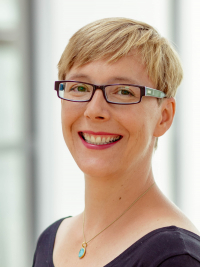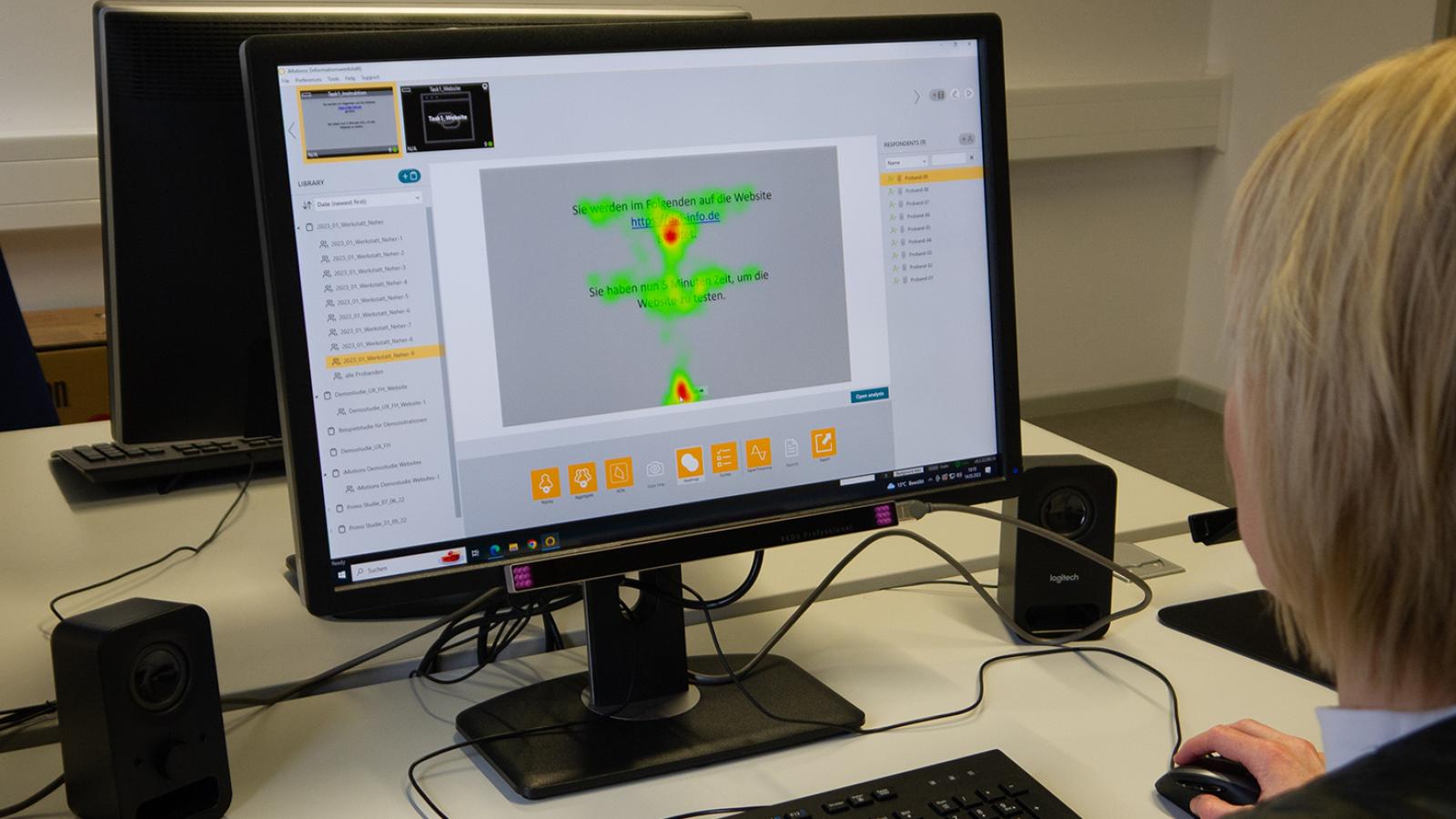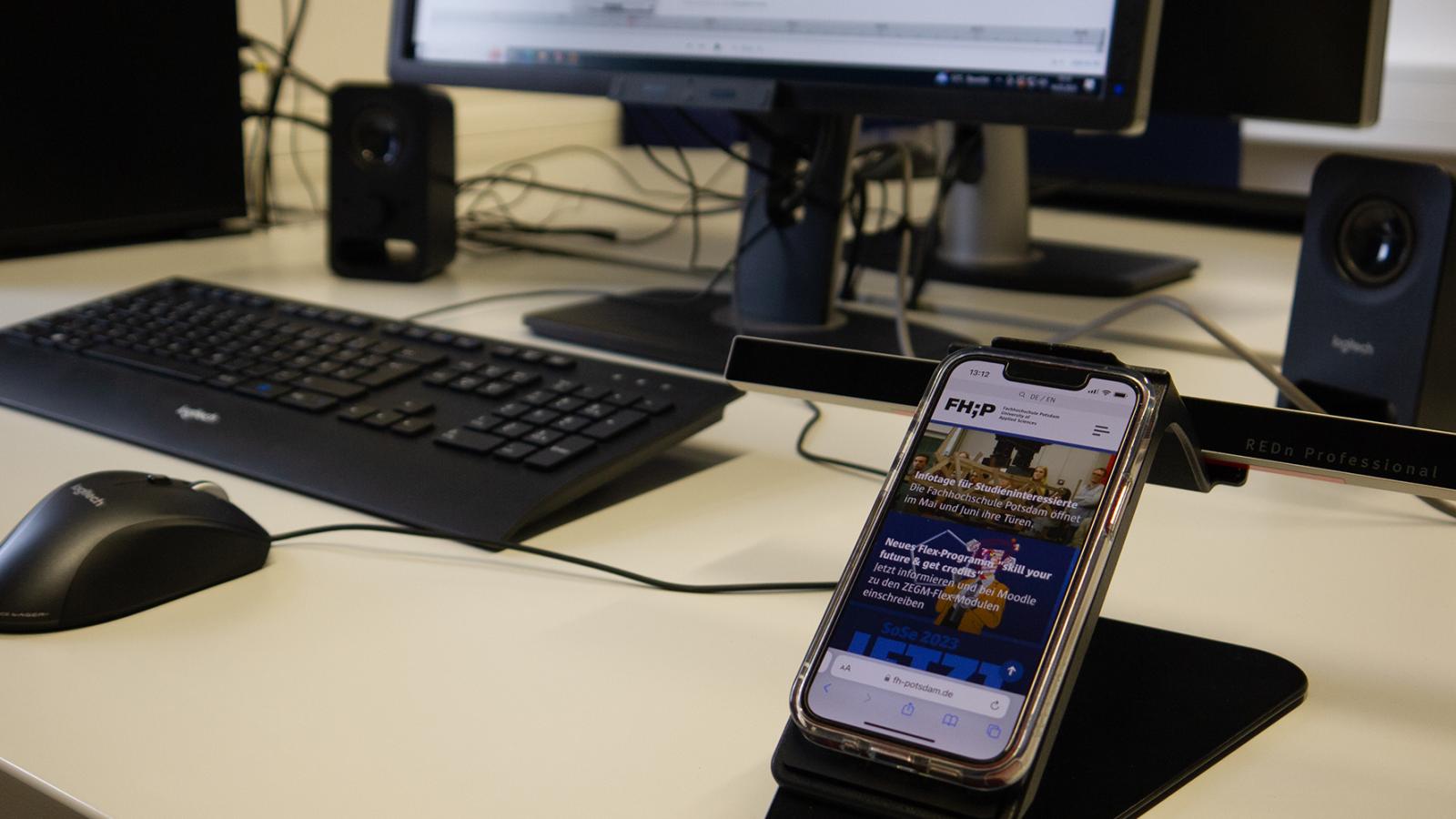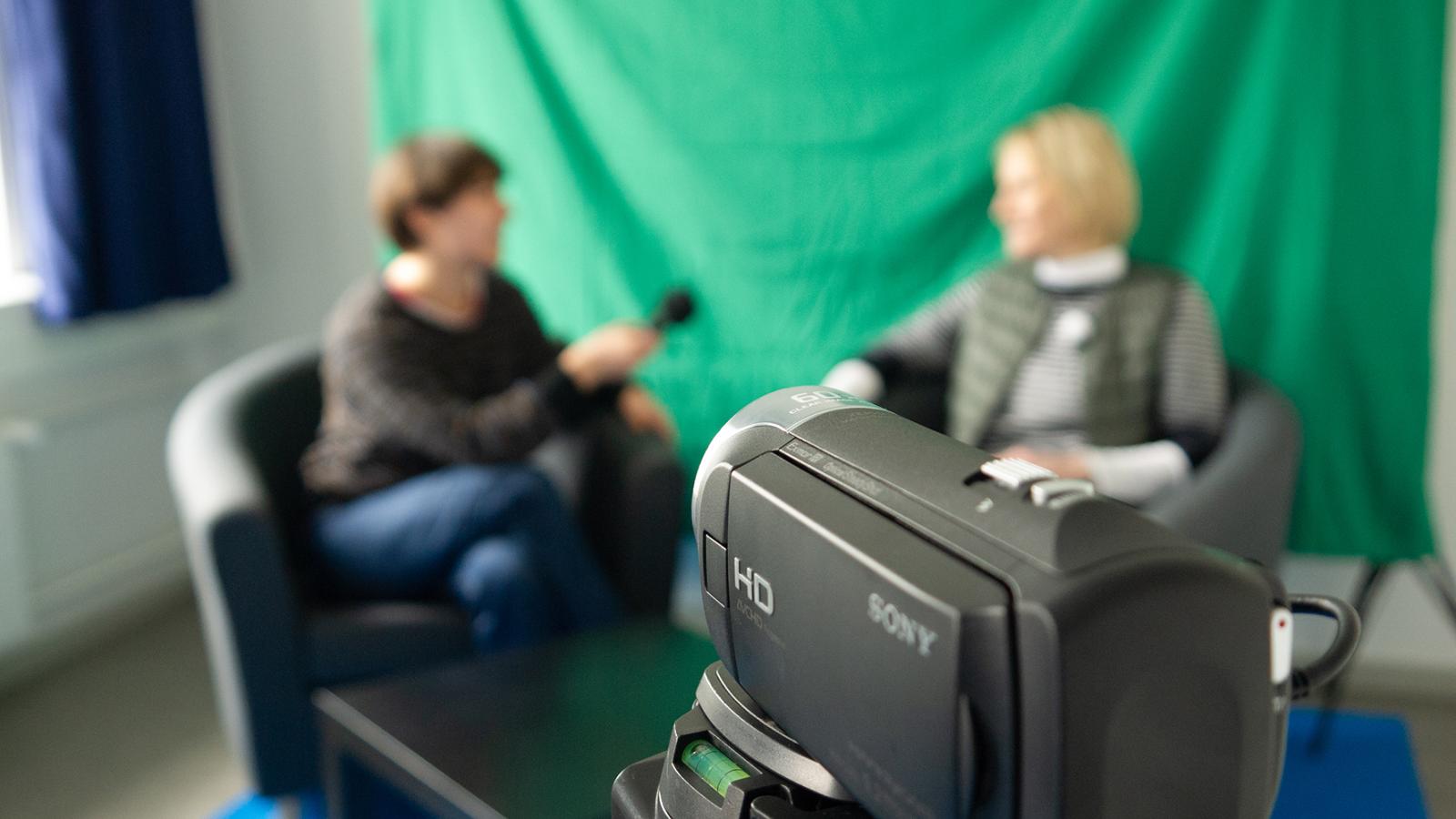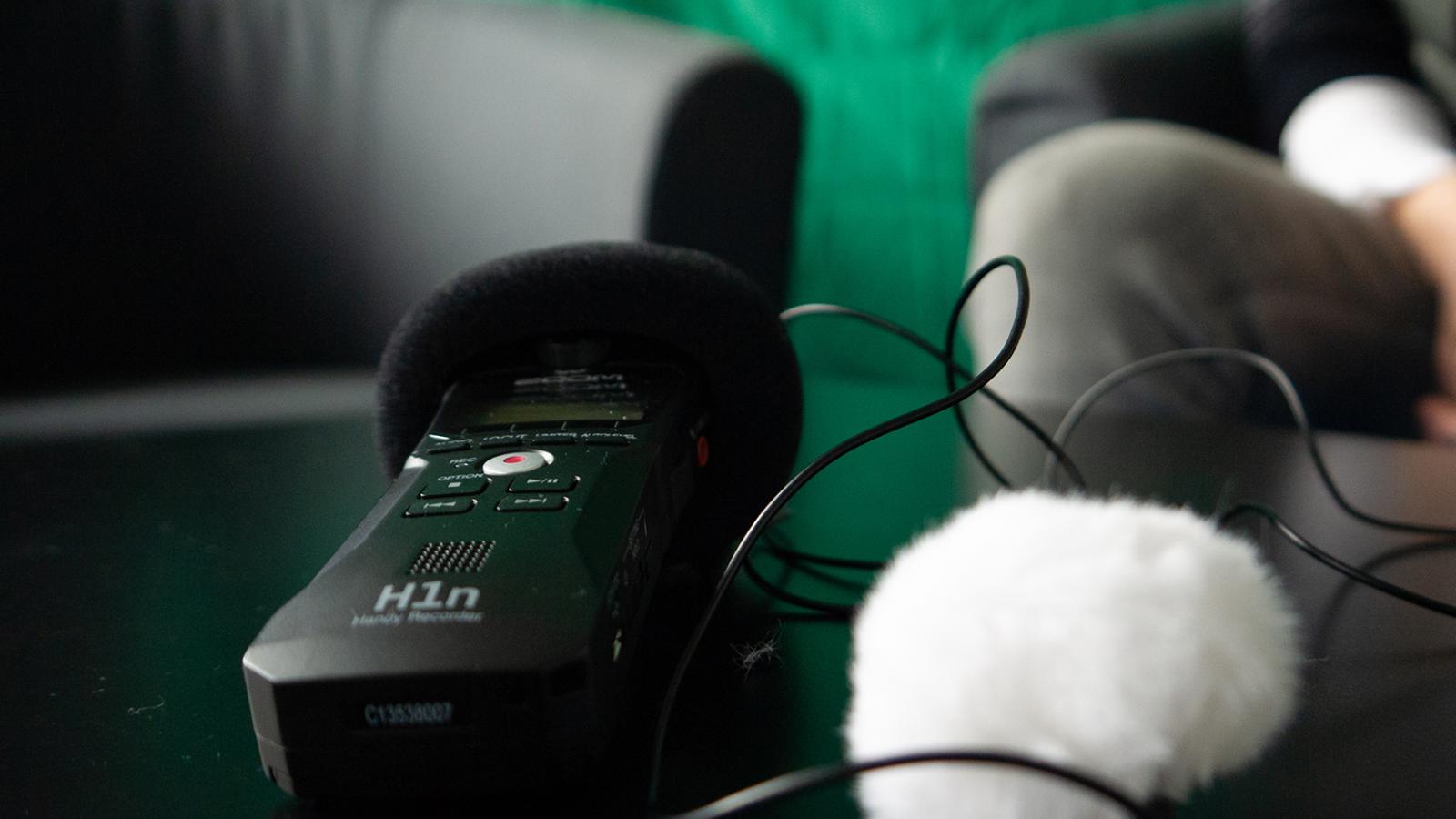Laboratory for Information Behaviour & Science Communication (i&k-Lab)
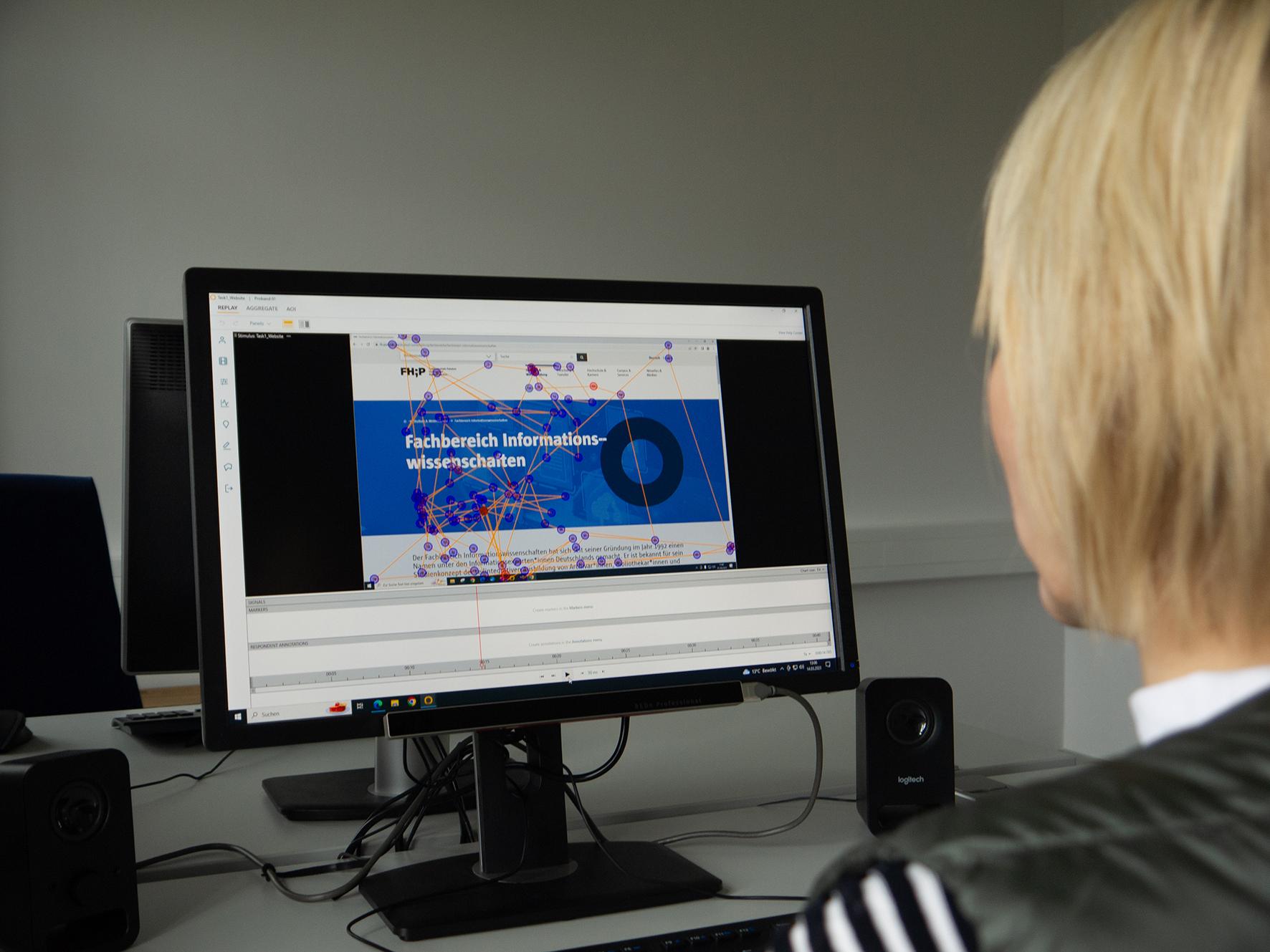
The i&k-Lab of the Department of Information Sciences offers students, lecturers and staff the necessary infrastructure to carry out experimental teaching and research projects in the subject-specific context of information behaviour research and science communication in the laboratory rooms and in the mobile area.
Areas of application
Information behaviour research of individuals or groups in human-technology interaction, e.g. through
- Evaluation of information systems with regard to their information structuring and usability
- comparative or specific research into the user experience when dealing with digital or analogue information offerings
- Cognitive information retrieval
Stationary and mobile eye tracking technology, camera technology and observation rooms are available for this purpose (see section "Technical equipment").
Development of methods and formats for science communication
- Audiovisual formats
- Audio formats
Recording equipment and flexibly usable rooms for the production of the formats as well as video editing suites are available for this purpose (see technical equipment).
Spatial and technical infrastructure
The i&k-Lab consists of three functionally differentiated rooms, two of which are connected via a semi-mirrored side.
Selected teaching-research projects
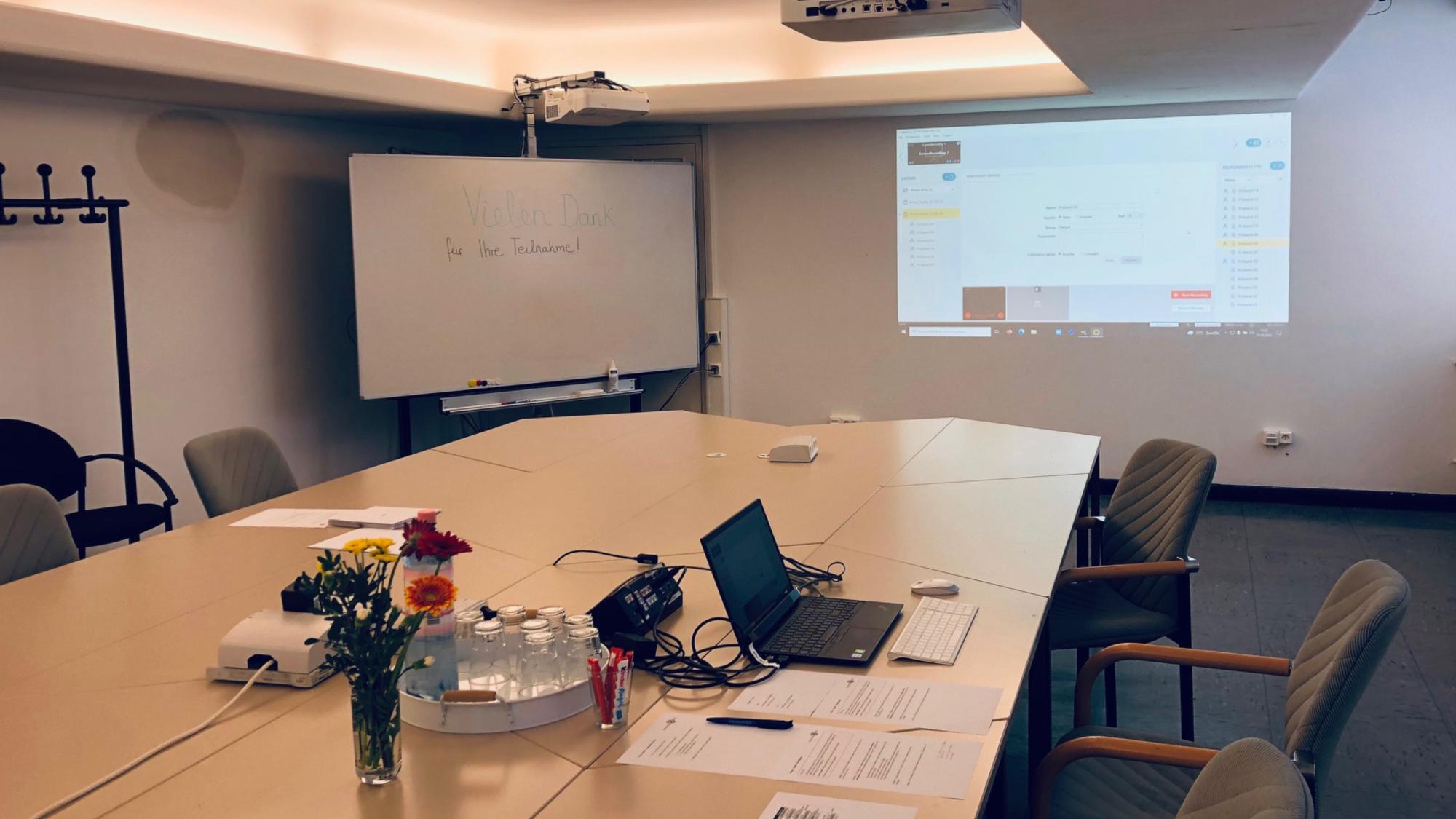
Primo study
As part of the B11 Information Behaviour and Sociology of Science module led by Alexandra Claasen, a usability/user experience study of the Primo discovery system at the Free University of Berlin (FU Berlin) was carried out in the summer semester of 2022.
The aim of the study was to analyse the Primo system with regard to its usability or potential usability problems and the existing user experience in order to then improve the potentially problematic elements in a further step. The study design and results were presented at the poster session at BiblioCon 2023 in Hanover.
Workshop project – Relaunch of a website using the example of the DGI
As part of the workshop seminar "Relaunching a website using the example of the German Society for Information and Knowledge – DGI" led by Prof. Dr. Günther Neher, a group of 12 students carried out an eye-tracking study. The aim was to document the first impression and orientation or organisation of the website in order to be able to revise and improve it. The results were incorporated into the concept development for the current redesign of the DGI website.
Contact
Information workshop management

Dipl.-Ing. (FH) Andrea Lakeit
Scientific management
